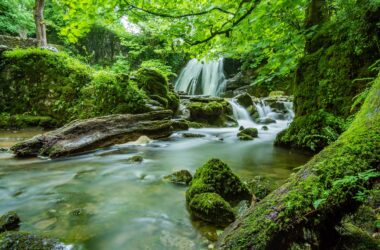Chilika Lake, located in the eastern Indian state of Odisha, is one of the largest lagoons in Asia and a significant eco-tourism destination. This picturesque water body is home to a wide range of flora and fauna, including migratory birds, dolphins, and several species of fish. Sustainable tourism practices in Lake are essential to preserve the biodiversity of the area and ensure that tourism does not cause any adverse effects on the environment. This article will discuss the sustainable tourism practices adopted in Chilika Lake, highlighting how they promote responsible tourism, preserve the natural resources, and benefit the local community.
- Background Information about Chilika Lake
Chilika Lake, spread over an area of 1165 sq. km, is located on the east coast of India, about 100 km south of the city of Bhubaneswar. The lake is connected to the Bay of Bengal through a narrow channel, and it is the largest brackish water lagoon in India. Chilika Lake is a wetland of international importance and has been recognized as a Ramsar site since 1981. The lake is a biodiversity hotspot, and it is home to over 225 species of fish, 160 species of birds, and several species of plants.
- Importance of Sustainable Tourism Practices in Chilika Lake
Tourism is one of the main sources of revenue for the local community living in and around Chilika Lake. However, tourism can also have adverse effects on the environment and the local community if not managed sustainably. To ensure that tourism in Chilika Lake does not cause any harm to the environment and the local community, sustainable tourism practices are essential. Sustainable tourism practices in Chilika promote responsible tourism, preserve the natural resources, and benefit the local community.
- Sustainable Tourism Practices Adopted in Chilika Lake
a) Ecotourism
Ecotourism is a sustainable tourism practice that promotes responsible travel to natural areas while conserving the environment and improving the well-being of the local community. Chilika is a popular ecotourism destination, and several ecotourism activities are offered to tourists, such as bird watching, boating, and camping. These activities are designed to minimize the impact on the environment and promote environmental awareness among tourists. Tourists are encouraged to follow responsible tourism practices, such as not littering, not disturbing the natural habitat of the animals, and using eco-friendly products.
b) Conservation of Biodiversity
The biodiversity of Chilika Lake is one of the main attractions for tourists. To preserve the biodiversity of the area, several conservation measures have been taken. The Chilika Development Authority, which is responsible for the management of the lake, has implemented several programs to conserve the biodiversity of the area. These programs include the conservation of mangroves, the restoration of degraded wetlands, and the protection of endangered species such as the Irrawaddy dolphin.
c) Community Participation
Community participation is essential to ensure the sustainability of tourism in Chilika Lake. The local community is involved in the planning, development, and management of tourism activities. The Chilika Development Authority works closely with the local community to ensure that their traditional livelihoods are not affected by tourism activities. The local community is also involved in the promotion of responsible tourism practices and the conservation of the environment.
d) Promotion of Sustainable Practices
Tourists visiting Chilika Lake are encouraged to adopt sustainable practices such as using eco-friendly products, not littering, and conserving energy. The Chilika Development Authority has implemented several awareness campaigns to promote sustainable tourism practices among tourists. These campaigns include the distribution of information pamphlets, the installation of signboards, and the organization of seminars and workshops.
- Examples of Sustainable Tourism Practices in Chilika Lake
a) Community-Based Tourism
Community-based tourism is a sustainable tourism practice that involves the local community in the planning, development, and management of tourism activities. In Chilika Lake, several community-based tourism initiatives have been launched, such as the Rambha Ecotourism Society and the Mangalajodi Ecotourism Trust. These initiatives promote responsible tourism practices, preserve the natural resources, and provide economic opportunities to the local community.
b) Mangrove Conservation
Mangroves are an important part of the ecosystem in Chilika. They provide a habitat for a wide range of flora and fauna, including migratory birds and fish. To preserve the mangroves, the Chilika Development Authority has implemented several conservation measures, such as the construction of bamboo fences to prevent erosion, the planting of mangrove saplings, and the removal of invasive species.
c) Eco-Friendly Boats
Boating is a popular activity in Chilika Lake, but traditional boats are not eco-friendly as they use petrol and diesel engines. To promote sustainable tourism practices, the Chilika Development Authority has introduced eco-friendly boats that run on solar power. These boats are noiseless and do not emit harmful pollutants, ensuring that the environment is not disturbed.
d) Waste Management
Waste management is an important aspect of sustainable tourism practices. To ensure that the environment is not littered with waste, the Chilika Development Authority has implemented several waste management measures. These measures include the installation of waste bins at tourist spots, the promotion of waste segregation, and the use of composting techniques to manage organic waste.
- Benefits of Sustainable Tourism Practices in Chilika Lake
Sustainable tourism practices in Chilika have several benefits for the environment, the local community, and the tourism industry.
a) Environmental Benefits
Sustainable tourism practices promote the conservation of natural resources, such as water, land, and biodiversity. By adopting sustainable practices, tourism in Chilika Lake does not cause any harm to the environment, and the ecosystem remains intact.
b) Economic Benefits
Tourism is a significant source of revenue for the local community in and around Chilika Lake. Sustainable tourism practices ensure that the economic benefits of tourism are shared equitably among the local community, and traditional livelihoods are not affected.
c) Social Benefits
Sustainable tourism practices promote community participation, and the local community is involved in the planning, development, and management of tourism activities. This involvement ensures that the local community benefits from tourism and that their cultural heritage is preserved.
d) Tourist Benefits
Tourists benefit from sustainable tourism practices as they get to experience the natural beauty of Chilika Lake without causing any harm to the environment. By adopting sustainable practices, tourists can also ensure that their travel has a positive impact on the local community.
- Conclusion
Chilika Lake is a unique ecosystem that attracts tourists from all over the world. Sustainable tourism practices in Chilika are essential to ensure that tourism does not cause any adverse effects on the environment and the local community. Ecotourism, conservation of biodiversity, community participation, and promotion of sustainable practices are some of the sustainable tourism practices adopted in Chilika Lake. These practices promote responsible tourism, preserve the natural resources, and benefit the local community. The benefits of sustainable tourism practices in Chilika are numerous and ensure that the ecosystem remains intact, the local community benefits from tourism, and tourists have a positive experience.
Similar Articles
20 Sustainable Tourism Practices and Destinations in India to Visit Now
Sustainable Tourism Practices and Destinations: Examples from Around the World
Frequently Asked Questions
- What is Chilika Lake?
Chilika Lake is a brackish water lagoon located in the eastern Indian state of Odisha. It is the largest coastal lagoon in India and the second-largest in the world.
- Why is Chilika Lake important?
Chilika Lake is important because of its rich biodiversity, which includes more than 160 species of fish, 800 species of flora, and over 160 species of migratory and resident birds. The lake is also an important source of livelihood for the local community, who are involved in fishing and aquaculture.
- What are sustainable tourism practices?
Sustainable tourism practices refer to tourism activities that are designed to have a positive impact on the environment, society, and economy. These practices promote responsible tourism, minimize negative impacts on the environment, and ensure that the benefits of tourism are shared equitably among the local community.
- What are some examples of sustainable tourism practices in Chilika Lake?
Some examples of sustainable tourism practices in Chilika include community-based tourism initiatives, mangrove conservation measures, eco-friendly boats, and waste management techniques.
- What are the benefits of sustainable tourism practices in Chilika Lake?
The benefits of sustainable tourism practices in Chilika include environmental benefits such as the preservation of natural resources, economic benefits such as the promotion of local livelihoods, social benefits such as the preservation of cultural heritage, and tourist benefits such as a positive travel experience.
- What is community-based tourism?
Community-based tourism is a type of sustainable tourism that involves the local community in the planning, development, and management of tourism activities. This approach promotes community participation, preserves cultural heritage, and provides economic opportunities to the local community.
- How does waste management promote sustainable tourism in Chilika Lake?
Waste management is an important aspect of sustainable tourism in Chilika. Proper waste management techniques ensure that the environment is not littered with waste, and organic waste is composted. This promotes a clean and healthy environment for tourists and preserves the natural beauty of the area.
- How do eco-friendly boats promote sustainable tourism in Chilika Lake?
Eco-friendly boats are powered by solar energy and are noiseless and non-polluting. They do not emit harmful pollutants, ensuring that the environment is not disturbed. The use of eco-friendly boats promotes sustainable tourism practices and ensures that tourism does not harm the environment.
- What is the role of the local community in sustainable tourism practices in Chilika Lake?
The local community plays a significant role in sustainable tourism practices in Chilika. They are involved in the planning, development, and management of tourism activities, and their participation ensures that the benefits of tourism are shared equitably among the local community. This involvement also ensures that the cultural heritage of the area is preserved.
- How can tourists contribute to sustainable tourism in Chilika Lake?
Tourists can contribute to sustainable tourism in Chilika by adopting responsible tourism practices, such as avoiding littering, respecting the local culture and customs, and supporting local businesses. They can also participate in community-based tourism initiatives and support conservation measures in the area.
- What are some popular tourist activities in Chilika Lake?
Some popular tourist activities in Chilika Lake include boat rides, bird watching, dolphin watching, fishing, and visiting the Kalijai Temple.
- How does sustainable tourism benefit the local community in Chilika Lake?
Sustainable tourism benefits the local community in Chilika Lake by providing economic opportunities through the creation of jobs and the promotion of local businesses. It also promotes the preservation of cultural heritage and ensures that the benefits of tourism are shared equitably among the local community.
- What are some challenges to sustainable tourism in Chilika Lake?
Some challenges to sustainable tourism in Lake include overfishing, pollution, climate change, and unsustainable tourism practices. These challenges can harm the environment, impact the local community, and reduce the appeal of the area for tourists.
- How can sustainable tourism practices be promoted in Chilika Lake?
Sustainable tourism practices can be promoted in Chilika Lake through the involvement of the local community in tourism planning and management, the promotion of eco-friendly tourism practices, the implementation of conservation measures, and the development of community-based tourism initiatives.
- How can sustainable tourism benefit the environment in Chilika Lake?
Sustainable tourism can benefit the environment in Chilika by promoting conservation measures, reducing pollution, and promoting responsible tourism practices. These practices can help to preserve the natural resources of the area and protect the biodiversity of the lake.










